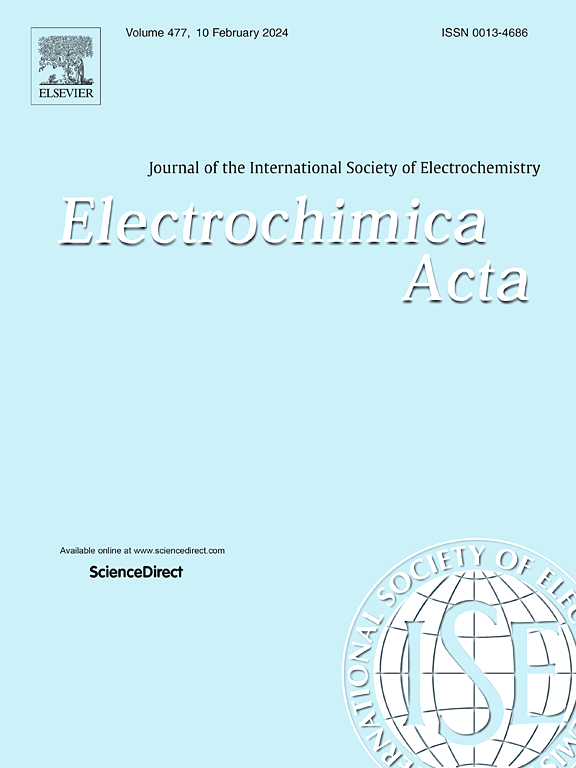裁剪阳离子官能团以增强聚砜基阴离子交换膜的稳定性和性能
IF 5.5
3区 材料科学
Q1 ELECTROCHEMISTRY
引用次数: 0
摘要
阴离子交换膜(AEMs)是电化学系统中很有前途的材料,因为它与碱性环境的相容性,使得非贵金属催化剂的使用具有成本效益。然而,阳离子官能团的碱性稳定性仍然是一个关键的挑战。本研究以聚砜为基础,以三甲基铵(TMA)和三乙基铵(TEA)两个铵官能团合成了聚砜基AEMs。采用核磁共振波谱(包括脉冲场梯度法和弛豫法)和电化学阻抗谱来评估其微观结构、电导率和耐久性。较短的TMA链增强了亲水性、电导率和碱性稳定性。燃料电池测试证实qPSU-TEA的化学稳定性很差,在操作条件下会迅速降解。相比之下,qPSU-TMA在相同条件下优于商用膜(FAA-3-50),在60 °C时达到220 mW/cm²的峰值功率密度,并在80 °C时保持高性能。这些研究结果突出了qPSU-TMA在高温下强大的电化学稳定性和界面完整性,并强调了阳离子基团设计在优化AEM性能和耐久性方面的关键作用。本文章由计算机程序翻译,如有差异,请以英文原文为准。
Tailoring cationic functional groups for enhanced stability and performance in Polysulfone-based anion exchange membranes
Anion exchange membranes (AEMs) are promising materials for electrochemical systems due to their compatibility with alkaline environments, enabling cost-effective use of non-precious metal catalysts. However, alkaline stability of cationic functional groups remains a key challenge. In this study, polysulfone-based AEMs were synthesized with two ammonium functional groups: trimethylammonium (TMA) and triethylammonium (TEA). NMR spectroscopy (including Pulsed Field Gradient method and relaxometry) and electrochemical impedance spectroscopy were employed to assess microstructure, conductivity, and durability. The shorter TMA chain enhanced hydrophilicity, conductivity, and alkaline stability. Fuel cell tests confirmed the poor chemical stability of qPSU-TEA, which degraded rapidly under operating conditions. In contrast, qPSU-TMA outperformed a commercial membrane (FAA-3–50) under identical conditions, achieving a peak power density of 220 mW/cm² at 60 °C and maintaining high performance at 80 °C. These findings highlight the robust electrochemical stability and interface integrity of qPSU-TMA at elevated temperatures, and underscore the critical role of cationic group design in optimizing AEM performance and durability.
求助全文
通过发布文献求助,成功后即可免费获取论文全文。
去求助
来源期刊

Electrochimica Acta
工程技术-电化学
CiteScore
11.30
自引率
6.10%
发文量
1634
审稿时长
41 days
期刊介绍:
Electrochimica Acta is an international journal. It is intended for the publication of both original work and reviews in the field of electrochemistry. Electrochemistry should be interpreted to mean any of the research fields covered by the Divisions of the International Society of Electrochemistry listed below, as well as emerging scientific domains covered by ISE New Topics Committee.
 求助内容:
求助内容: 应助结果提醒方式:
应助结果提醒方式:


